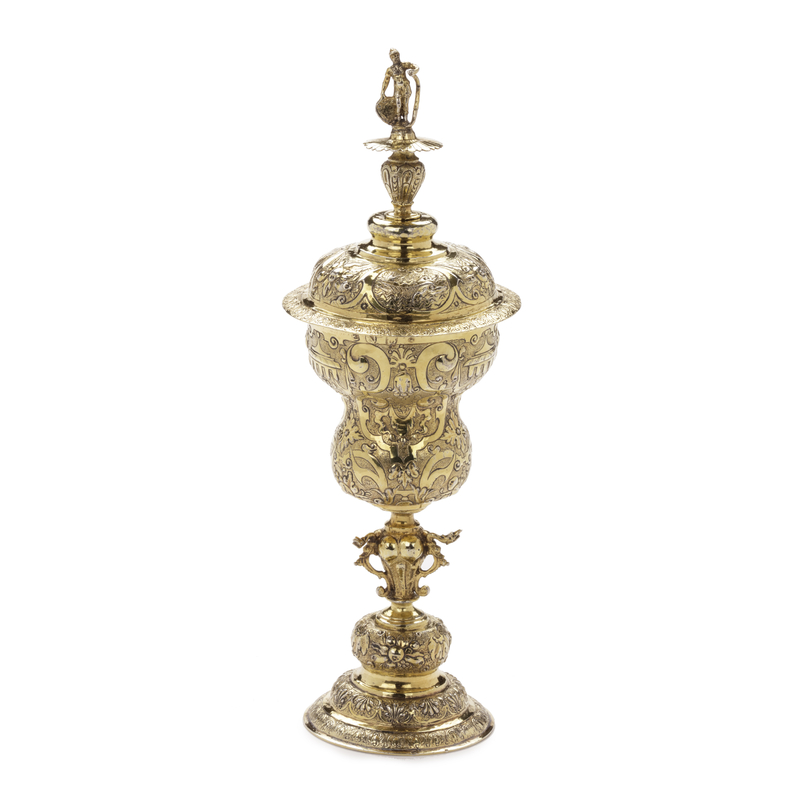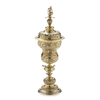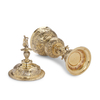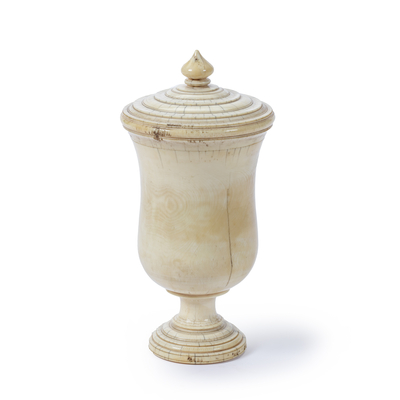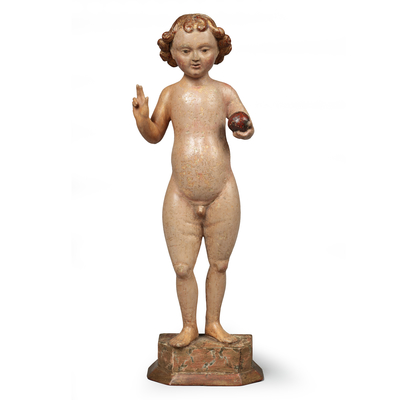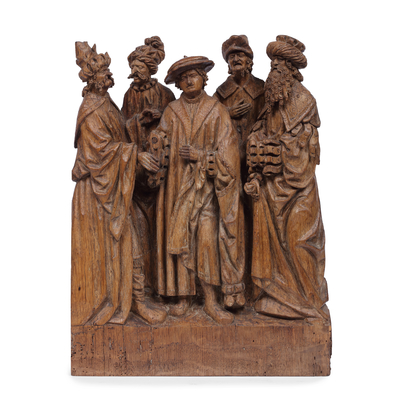Silver gilded cup and cover, Franssoys Eelioet
Global shipping available
- Origin
- Utrecht, Franssoys Eelioet
- Period
- 1621
- Material
- Vermeil
- Height
- 24.8 cm
- Literature
L. E van den Bergh - Hoogterp & B. Dubbe, Edele en onedele metalen. De verzamelingen van het Centraal Museum Utrecht, Utrecht 1997, Louise E. van den Bergh-Hoogterp; B. Dubbe (Utrecht, 1997), cat. no. 28, pp. 73-75.
A.L. den Blaauwen, Nederlands zilver, 1580 - 1830, Den Haag 1979, cat. no. 29, p. 62, 63.- Museums
Similar cup and cover by Eelioet:
- Centraal Museum Utrecht, inv. no. 10587
- Rijksmuseum Twente, inv. no. BR1599
- Fitzwilliam Museum Cambridge, inv. no. MAR.M.74-1912
Questions about this object?
Please use one of the contact options below:
Description
This exceptional gilt silver goblet was made by Utrecht silversmith Franssoys Eelioet (c. 1585 - 1642) in 1621. The elegant cup with arched cuppa on a high stand base is decorated with palmettes, acanthus leaves, fruit festoons, volutes and canopies. On the lid are three cartouches with sea creatures and dolphins. On top of the lid is a Roman soldier with shield and bow. The cup bears the year letter 'E' for 1621, the city hallmark of Utrecht, a deer's antlers as Eelioet's master's mark and later marks. This type of cup with a high foot and matching lid arose in the second half of the sixteenth century in Nuremberg and Antwerp, for instance.
Franssoys Eelioet (also spelled Francois Ellioth) was born in Antwerp around 1585 and later settled in Utrecht. There, he became a member of the Gold and Silversmiths' Guild in 1608, held the position of dean in 1632 and 1633 and was a inspector in 1635 to 1637 and 1638 to 1640. He died in 1642. A number of similar cups by his hand are known, in the collection of Centraal Museum Utrecht, Rijksmuseum Twente and the Fitzwilliam Museum Cambridge. One of these cups was captured on a still life in 1632 by the still life painter Willem Claesz. Heda. In this still life, next to the cup is a salt cellar, also made by Eelioet. Eelioet's late Renaissance-style work in Utrecht has its origins in typical Antwerp models.
